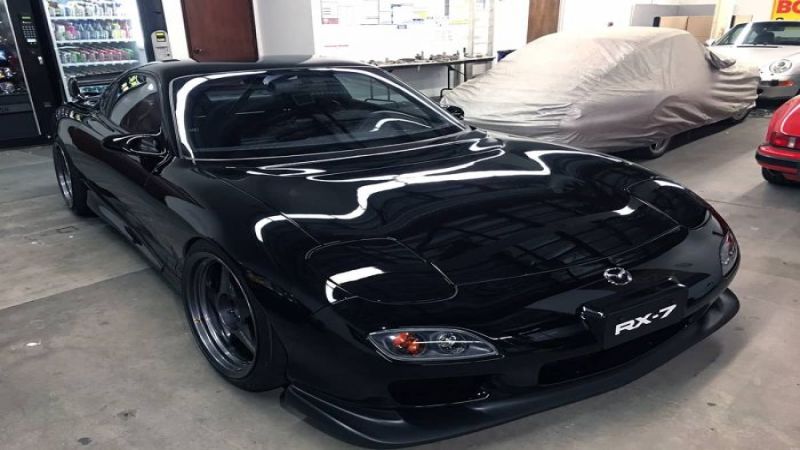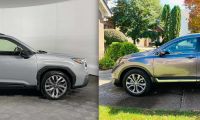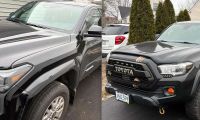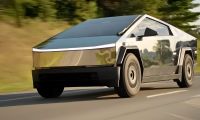Street parking can be dangerous even if your car is parked away from construction sites. Almost 20% of cars that are regularly parked on the street get hit by flying debris or gravel.
Earlier Torque News wrote about how to protect your car’s finish. What was the key lesson? Be proactive and prevent scratches whenever possible.
Interesting new research has quantified what we have all experienced in terms of car paint damage. A recent survey of frequent drivers in the United States found that over 70% of drivers park their cars outside both day and night seven days a week (see Infographic for results from Auto Shop Accessories). With over 250 million cars on the road domestically (According to IHS Markit), that’s a lot of vehicles exposed to the elements 24/7.
There are number of things that can damage your car if it’s regularly parked on a street. Bird poop on your car is not just an embarrassing look. It is also acidic, and in hot weather, can “etch” a car’s outer clear coat.
Many drivers park in the shade to avoid damage from UV rays and to keep their cars cool. This can actually be the “greater of two evils” as leaves and pollen contain tannic acids which can leave brown stains that only a trip to a professional detailer can remove.
Storms are another great risk for cars that are parked outside. Even a rain is a big concern because rain drops can pick up contaminants, like sulfur, dioxide and nitrogen oxide from acide rain.
How can you prevent, or at least mitigate, this type of damage to your car?
1. Park Strategically
We have all heard of defensive driving. Well there’s nothing wrong with defensive parking either. Especially in parking lots with narrow spaces, the closest space is not always best. Don’t save yourself 10 yards of walking if the alternative is parking super close to a Ford F250 Super Duty truck. Your doctor will be happy as well as you will get some exercise bay walking longer.
Years ago I used to work in a church as a music director. It was a vibrant community and had many visitors during the week. One time as I was getting ready to go home for lunch, I noticed that the front of my car was hit. Someone hit the car in a parking lot and left. My car was parked in the middle of the parking lot. Other cars could park in front of it or behind it.
About an hour later a respected many came to me and said there is no need to call the police because his car hit my car as he was trying to park in front of me. Because he was an elderly gentlemen and couldn't hear well, he didn't notice that his giant truck hit my small Nissan Altima. As a result, he went home and when he saw the back of his car was hit, he returned to the church and saw my car. That's when he came to me and said he hit my car accidentally.
Everything was resolved, but what's the lesson here? When possible try to park your car alongside a curb or facing a curb. In this way you will be proactive and you will lessen the possibility of someone hitting your car in a parking lot.
2. Keep Your Car Clean and Waxed
Wax acts as a sealant, and premium carnauba-based waxes can help protect against UV rays and many of the environmental hazards I have mentioned above. Car protection films like a 0.2mm plastic coating, can also help prevent car damage by providing a similar layer of extra protection.
3. Use Car Covers
If garaging your car is not an option, consider using a car cover. Poor quality car covers can do as much damage as good, but quality options exist at affordable prices. Key things to look for are quality of fabric, fit and “breathability” (i.e. letting any trapped moisture evaporate to prevent mildew). Car covers are widely used with hobbyist cars like BMWs and Ford Mustangs, but apparently, much less so with other classes of cars.
If you skim the best selling car covers on Amazon, you will notice two things. First, the best sellers are cheaper, budget car covers. Second, they mostly get middling-to-poor reviews. There are a few reasons for this. These car covers are universal fit, i.e. made to fit many brands, models and years, versus custom fit which are tailored to a specific make and model (e.g., a 2007 Chevy Camaro). The universal car covers are lower cost, but the trade off is that they don't fit as well and are usually made out of cheaper fabric. A downside of cheaper fabric is that the inner lining can scratch the clear coat if not soft material (cotton and nylon fleece blends are the best, poypropylene is only acceptable). A downside of poor fit is that it can allow dirt to get under the cover which can rub against your paint.
Jack from Auto Shop Accessories, who's infographic was mentioned above says generally they would recommend a Custom fit vs universal fit car cover made out of good quality materials. These car covers usually run between $150 and $250 ,but covers made for extreme outdoor protection can be more. "Given the cost of an average car and the cost of repairing door dings, we think this is a good return on investment," said Jack to Torque News. If your budget means you can only afford a universal cover for $60 or less, there are some good options in the marketplace as well. You just have to be careful and read the reviews.
Just be proactive and prevent your car from damage as much as you can.












